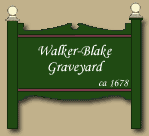Carvers
Carvers
Backrounds of the Gravestone Carvers
Backrounds of the Gravestone Carvers
Carvers
Backrounds of the Gravestone Carvers

conservation work
Fannin-Lehner is a Historic Preservation Consulting firm which has developed a specialty in gravestone conservation. They provide both consultation and actual conservation services. Their work takes them all over New England, New York, and Ohio.
Fannin-Lehner has had substantial experience in training and working with volunteers in cemetery conservation. Their burial ground restoration services include:
-
stone by stone written and photographic evaluation documenting state and condition of burial grounds and gravestones
-
restoration/repair/resetting of gravestones
-
cleaning of gravestones
-
workshops in basic gravestone restoration techniques
-
tomb marker restoration and rebuilding
conservation Techniques



Stone cleaning
It is necessary to clean a gravestone before performing conservation procedures. The appearance and legibility of many markers can be dramatically improved by washing with water and medium bristle brushes. A good source of clean water is very important is a conservation project. It is necessary to gently remove biological growths such as algae and lichen because they trap moisture against the stone. Pressure washing of the soft markers (marble, sandstone, and slate) should be avoided due to the adverse and irreversible effects of this method. Only a very few cleaning products are safe for use on marble, slate or other types of stone grave markers.
Resetting
This is a basic procedure to prevent serious damage to tilting markers. It involves excavation of the stone and resetting in a sand and pea-stone mixture which provides the proper support and drainage. In no case should slate, marble or brownstone fragments be placed in concrete due to the deleterious effects of this method. Stones currently set this way often are left as is, since attempts to free the marker usually are more detrimental in the short run.
Adhesive repairs
There are a very limited number of adhesives which have proved efficacious for use on stone existing in the uncontrolled environment, particularly slate.
Mortaring into a base
This is the process for re-securing markers into bases from which they have come loose. It utilizes the same type of soft mortar mentioned in the discussion of cast bases. Concrete should never be used for this procedure. Instead, soft, high lime mortar is employed.
Advanced procedures
Capping, grouting, drilling, and blind pinning are other repair procedures which are utilized to conserve gravestones. Some require the availability of an electrical source in order to permit proper completion.